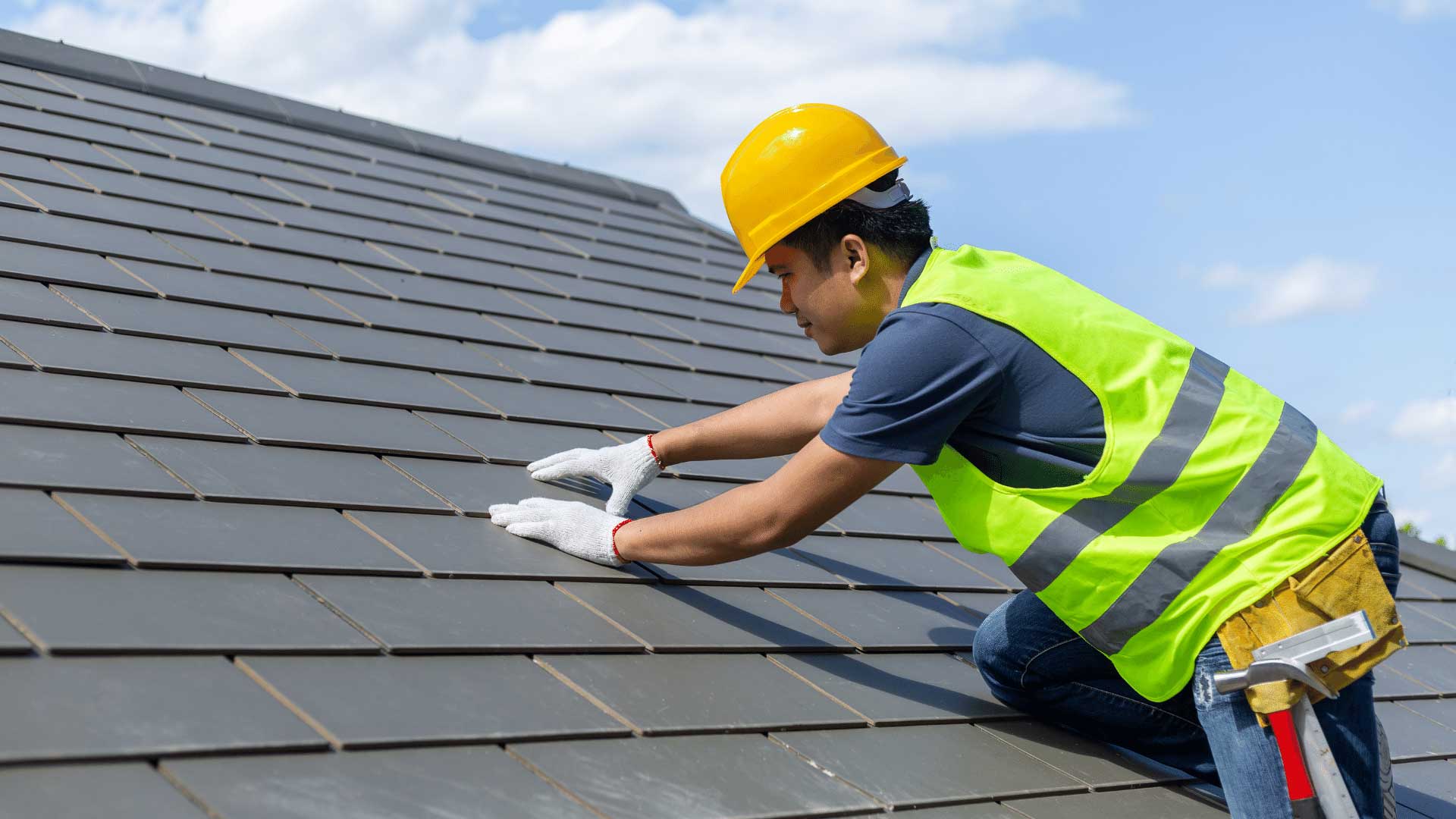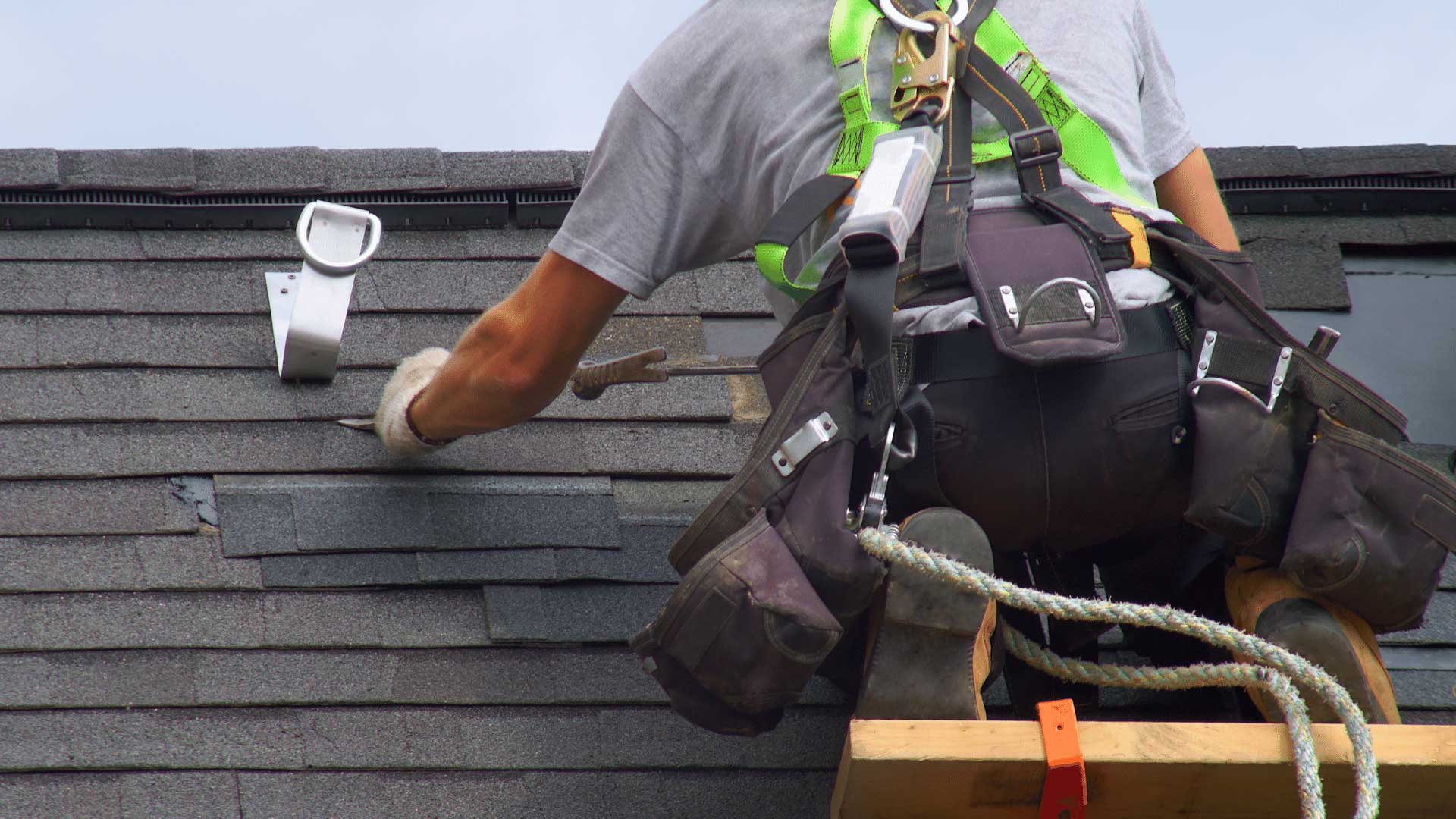Replacing a roof is a major undertaking, requiring both time and money. Regardless of the reasons for replacing an existing roof – whether it be due to age or damage caused by weather conditions – careful consideration must be taken before committing to such a project. This article will outline essential information that should be considered when deciding to replace one’s roof.
The first step in determining whether or not replacement is necessary involves conducting an inspection of the current condition of the roof. Signs of wear and tear may include cracked shingles, missing pieces, curling edges, moss growth or water damage. Furthermore, if there has been any recent storm damage then this should also be taken into account when considering replacement options. Taking these steps can help identify potential issues which could lead to further expenses down the line if they are not addressed now.
In addition to inspecting the current condition of the roof, research needs to be conducted regarding materials used in construction as well as pricing estimates from reputable shingle roofing contractors. Different types of materials have different lifespans and cost associated with them so researching what works best for each individual situation is paramount to ensuring satisfaction with the end result. Finally, understanding local building codes and regulations is key in achieving compliance prior to commencing work on any home improvement project like replacing a roof.
Assess The Condition Of Your Current Roof
When it comes to replacing your roof, the first step is to assess its current condition. This will help determine if a replacement is needed and can save you time and money.
To properly assess the condition of your roof, an professional roof replacement San Antonio should be consulted. A qualified contractor can identify any weak points or damage that may have gone unnoticed by an untrained eye. They will also check for missing shingles, loose flashing, caulking issues, and other signs of wear that could indicate a need to replace the entire roof or just parts of it.

It’s important to remember that not all roofs are created equal. Different types of materials require different levels of maintenance in order for them to continue functioning well – so taking this into account when assessing the condition can ensure you make an informed decision about whether a repair or full replacement is necessary. Taking these factors into consideration now can prevent costly problems from arising down the line and keep your home protected from future weather damage.
Research Roof Replacement Materials
Replacing a roof can be an intimidating process for homeowners. To ensure that the job is completed correctly, it is essential to research the different types of materials available before investing in a new roof. Understanding what material will best suit one’s needs and budget can help make the decision-making process more manageable.
The most common types of roofing materials include asphalt shingles, wood shakes, metal roofs, clay or slate tiles, and rubber membranes. Each type of material provides unique benefits; however, some are better suited for certain climates than others. Asphalt shingles tend to be among the most popular options due to their affordability and easy installation; they also offer good protection from rain and wind. Wood shakes provide a rustic aesthetic but may require more maintenance over time; on the other hand, metal roofs are extremely durable but can be noisy during heavy rainfall or hailstorms. Clay or slate tiles have been used as traditional building materials for centuries; although expensive upfront costs could prevent many people from choosing this option. Lastly, rubber membrane roofs are relatively inexpensive but not ideal if you live in areas with extreme temperatures as these surfaces tend to become brittle when exposed to drastic temperature changes.
When researching roof replacement materials, it is important to consider factors such as cost efficiency, durability against weather conditions like hail and high winds, energy efficiency during hot summers or cold winters and whether local codes allow specific types of construction materials on your home’s rooftop. Comparing all available options carefully will ensure that homeowners make informed decisions about which product offers them the best value for money while providing long-term protection from natural elements.
Calculate The Costs Of Roof Replacement
Before homeowners can make an informed decision on roof replacement, they should take the time to research the costs associated with such a project. A thorough understanding of all expenses related to roof replacement is essential for making sure that any cost overruns and unexpected fees are accounted for in budgeting.
To determine how much money needs to be set aside for replacing a roof, one must first establish what type of materials will be needed. The types of shingles available range from asphalt to metal and even wood shakes or composite tiles. Some products may require additional installation tools or methods that could add up quickly if not taken into consideration during the planning phase. Furthermore, accessories like flashings, ventilation systems, and skylights also need to be factored into the total cost since these items affect the overall performance of the new roof.
Once all these factors have been identified by a professional contractor, it’s important to get multiple estimates so as to compare prices between companies. This allows homeowners to choose the best option based on their individual circumstances while ensuring that no hidden charges or extra labor costs are added later down the line. Taking this step up front can help ensure a smoother process when replacing one’s rooftop and minimize any potential financial surprises along the way.
Consider Adding Extra Features
When considering a roof replacement, it is important to consider adding extra features that may increase the value of your home. These features may help protect and preserve the structure of your home for years to come.
Adding additional insulation or an energy-efficient layer can significantly reduce heating and cooling costs while also providing soundproofing benefits. It’s also possible to add ventilation systems like ridge vents or soffit intakes which allow air circulation beneath the roof membrane and prevent moisture buildup in attics or crawlspaces. Finally, replacing shingles with metal roofs will provide greater protection against extreme weather conditions.
The cost associated with these added features should be weighed carefully as they could potentially offset any savings from decreased utility bills over time. Furthermore, some improvements may require professional installation which can lead to even higher costs depending on labor rates in your area. Taking into account all factors involved prior to making a decision allows you to make an informed choice about how best to move forward with your roof replacement project.
Learn About Roofing Installation Processes
Installing a new roof is no small task. It requires knowledge and skill, both of which must be gained before embarking on the project. The fifth step in the process is learning about the various installation processes involved with replacing your roof.
It’s important to take time to research different options for installing a new roof, including material types and tools used. Depending on the type of materials you are using, there may be specific steps that need to be taken during the installation process. For example, asphalt shingles require an underlying layer of felt paper or tar paper laid down first before laying out the individual pieces. Additionally, certain techniques may need to be employed depending on local climate conditions or other factors such as slope or pitch of the rooftop surface.
By understanding these details ahead of time, it can help make sure everything goes off without a hitch when it comes time to install your new roof. This will also allow you to identify any potential problems early so they can be addressed prior to beginning work on the actual installation. Taking this extra step up front will ensure that you end up with a safe and secure structure that will last for many years after completion.
Get Professional Roofing Estimates
Replacing a roof is no small task, and there are many steps to take before beginning the project. Step six involves getting professional estimates from qualified contractors. Receiving multiple quotes will not only help determine which option best fits one’s budget but also allow for price comparisons that can lead to choosing the best contractor for the job.
In order to get accurate estimates, it is important to consider three key elements: materials selection, labor costs, and nature of the work. With regards to materials selection, homeowners should assess their climate and environment in order to select appropriate shingles or tiles. In terms of labor costs, preparing a list of details regarding services included can provide clarity when considering bids from different contractors. Finally, understanding the scope of the job – such as whether structural repairs need completing – is essential information that should be provided in advance.
Fully comprehending these components helps ensure an estimation process that enables selecting the right contractor who meets both budgetary needs and quality standards. To this end, gathering knowledge on installation processes beforehand allows homeowners to make informed decisions while replacing their roofs with peace-of-mind assurance that they have chosen correctly.

Understand Local Building Permits And Codes
Before replacing a roof, it is important to understand the local building permits and codes. It is essential that you make sure that your project adheres to these standards or there may be hefty fines. Each municipality has different rules for what can and cannot be done on roofs so understanding them before starting work is key in avoiding any issues with the law.
In order to make sure that you are compliant, contact your local building department. They will have all of the information regarding which documents must be submitted prior to construction as well as give advice about any specific regulations related to your renovation project. For example, they might require a structural engineer’s report if the existing structure isn’t able to support new materials or features such as skylights.
Be aware that failure to obtain proper building permits could result in costly fees after inspection by an official. Depending on where you live, this could also lead to having to tear down newly added elements of the roof until they meet requirements set out by the municipal government’s code of ordinances. Taking time beforehand to ensure everything follows protocol can save lots of headaches when it comes time for installation.
Prepare For The Actual Roof Replacement
Replacing your roof can be a major and time-consuming process. It is important to prepare for the actual replacement by assessing the materials, tools and labor required. This requires doing research on local building permits and codes, as well as familiarizing yourself with any rules or regulations in place regarding roof replacements.
The preparation stage of replacing your roof also involves taking into consideration factors such as cost and safety measures. You will need to have an understanding of what kind of material you are using, the type of structure that needs covering, whether it’s sloped or flat, how long it will take to complete, who will do the job (professional like Shild Roofing vs DIY), etc., so that you can make informed decisions about every aspect of the project. Additionally, depending on where you live there may be specific requirements from insurance companies or other authorities that must be met before work begins.
It is therefore essential to ensure all details are taken care of prior to commencing repairs or replacements; this includes obtaining necessary paperwork, making sure workers have suitable certifications/licenses if needed and ensuring proper disposal methods for old materials used during demolition phase. Being organized and having a clear plan in mind when starting out will not only save you money but also minimize potential delays caused by unforeseen circumstances that could arise during the installation process.

